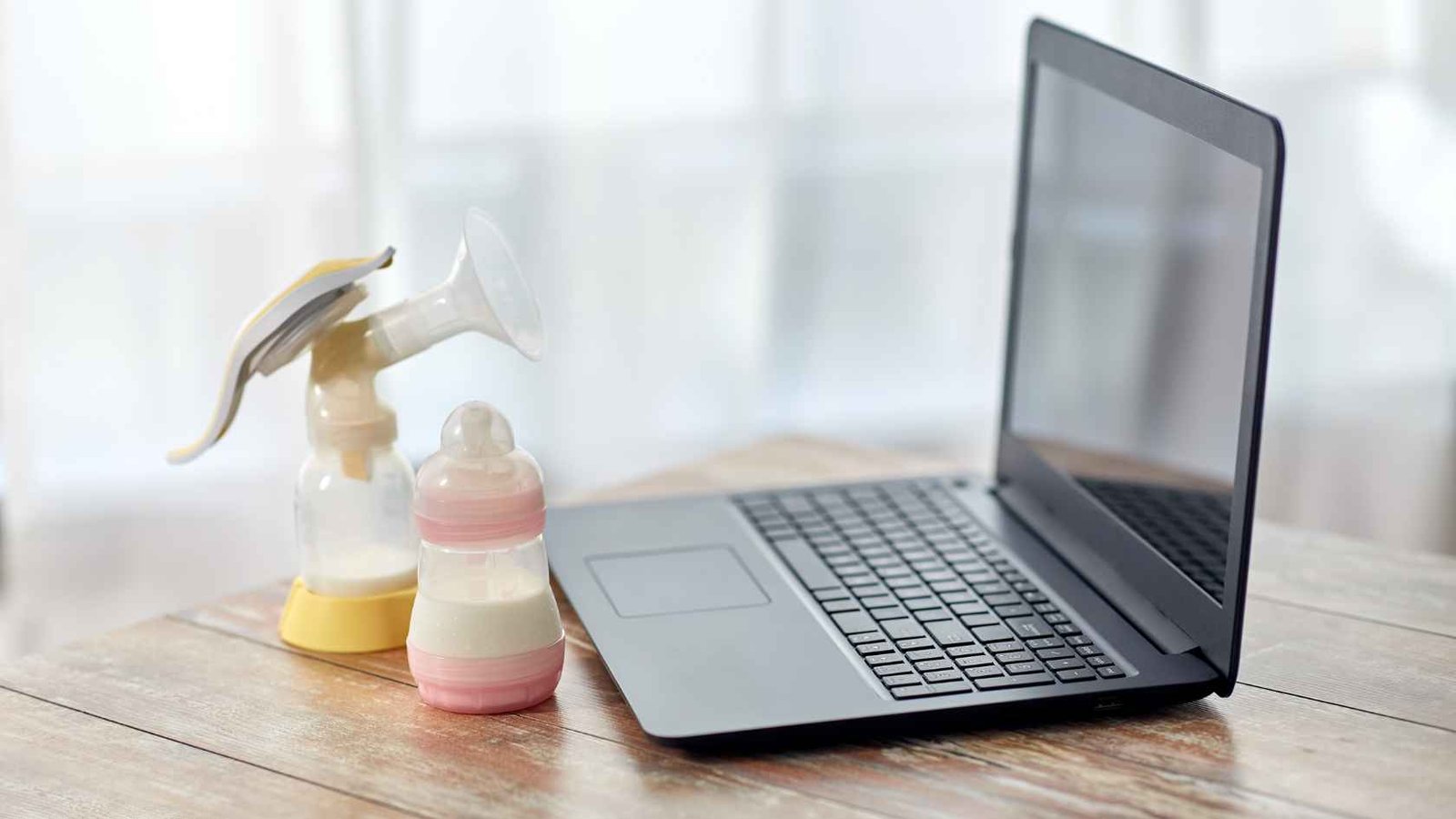Returning to work while breastfeeding can be a challenging transition for many moms.
One of the biggest questions is, “How often should I pump at work?”
Generally, you might need to pump 2 to 3 times during an 8-hour workday, depending on your baby’s age.
This article will explore this topic in more detail and help you create a smooth pumping routine at work.
How Often Should I Pump at Work?
How often to pump at work depends on several factors. It depends on your baby’s age, your milk supply, and your baby’s feeding schedule.
Here’s a general guideline to help you determine how often to pump:
1. For Newborns (0-3 months)
Newborns usually feed every 2-3 hours.
To maintain your milk supply, you should aim to pump at work every 2 to 3 hours. This usually means three pumping sessions during an 8-hour workday.
2. For Infants (3-6 months)
As your baby grows, they may start feeding every 3-4 hours. You should aim to pump every 3-4 hours at work. That often means two to three pumping sessions during the day.
3. For Older Babies (6-12 months)
Older babies might start to feed less frequently, often every 4-5 hours. Depending on your baby’s feeding schedule, you may need to pump two times during an 8-hour workday.
4. Adjust Based on Your Supply
If your milk supply is decreasing, try adding a pump session or extending your current ones.
It’s important to mimic your baby’s feeding pattern as closely as possible to maintain your supply.
Creating a Pumping Schedule at Work

A consistent pumping schedule at work is crucial. It will help you balance your job and breastfeeding.
Here’s how to create an effective pumping routine:
1. Plan Your Pumping Times
Try to schedule your pumping sessions at the same times each day. For example, you might pump mid-morning, at lunch, and mid-afternoon.
Consistency helps your milk supply. It also makes it easier to integrate pumping into your workday.
2. Communicate With Your Employer
Talk to your employer or HR department about your need to pump during the workday.
Make sure you have a private and clean space for pumping. Everyone should respect your pumping breaks.
Know your workplace lactation rights. Advocate for the support you need.
3. Time Management
Each pumping session takes about 15-20 minutes, plus time to set up and clean up. Make sure you allocate enough time in your schedule to pump without feeling rushed.
If possible, use your breaks or lunch to pump. This will minimize disruptions to your work.
4. Use Efficient Pumping Techniques
Double electric breast pumps are ideal for working moms. They allow you to pump both breasts simultaneously. Reducing the time you spend pumping.
Also, using a hands-free pumping bra lets you work while pumping.
Related Reading: How Working Moms Breastfeed Like Pros While in the Office?
Storing Breast Milk at Work
Proper storage of breast milk at work is essential to ensure it remains safe for your baby. Here are some tips for storing your milk:
1. Use Storage Bags or Bottles
Store your pumped milk in breast milk storage bags or bottles. Label each container with the date and time of pumping to ensure the oldest milk is used first.
2. Keep Milk Cool
Breast milk should be stored in a refrigerator as soon as possible after pumping.
If a refrigerator isn’t available, use a cooler bag with ice packs to keep the milk cool until you can store it properly.
3. Know Storage Guidelines
Fresh breast milk can be stored in the fridge for up to 4 days or in a cooler bag with ice packs for 24 hours.
Be sure to transfer the milk to a refrigerator or freezer as soon as you can.
Managing Milk Supply at Work

Maintaining your milk supply while working requires consistency and care.
Here are a few tips to help:
1. Stay Hydrated and Eat Well
Drink plenty of water and maintain a balanced diet to support your milk production.
2. Relax During Pumping
Stress can negatively impact milk flow. Try to relax during pumping sessions by listening to calming music or looking at photos of your baby.
3. Massage Your Breasts
Gently massaging your breasts before and during pumping can help. It may stimulate milk flow and increase output.
A Good Strategy And Support Can Simplify Pumping at Work
Pumping at work can be challenging. But, with the right strategy and support, you can keep your milk supply and feed your baby.
Try to implement the strategy mentioned above to make the process as smooth as possible.
How often do you pump at work, and what strategies have worked for you? Share your experiences in the comments below! Don’t forget to explore more articles like this on workingmomandbaby.com.

